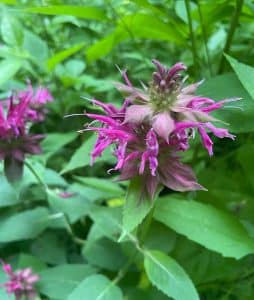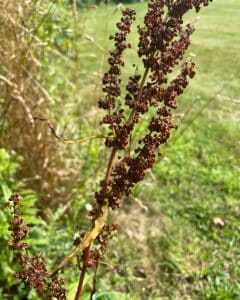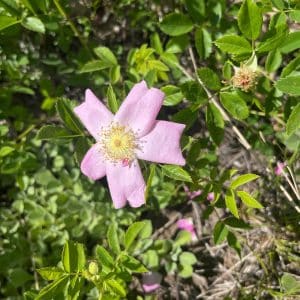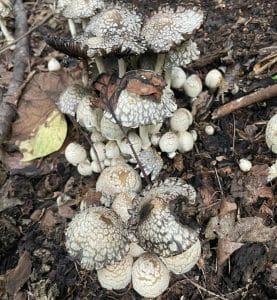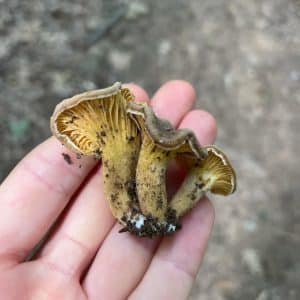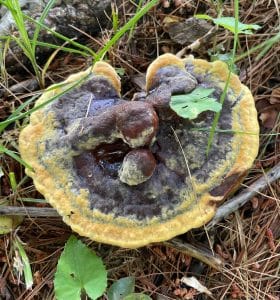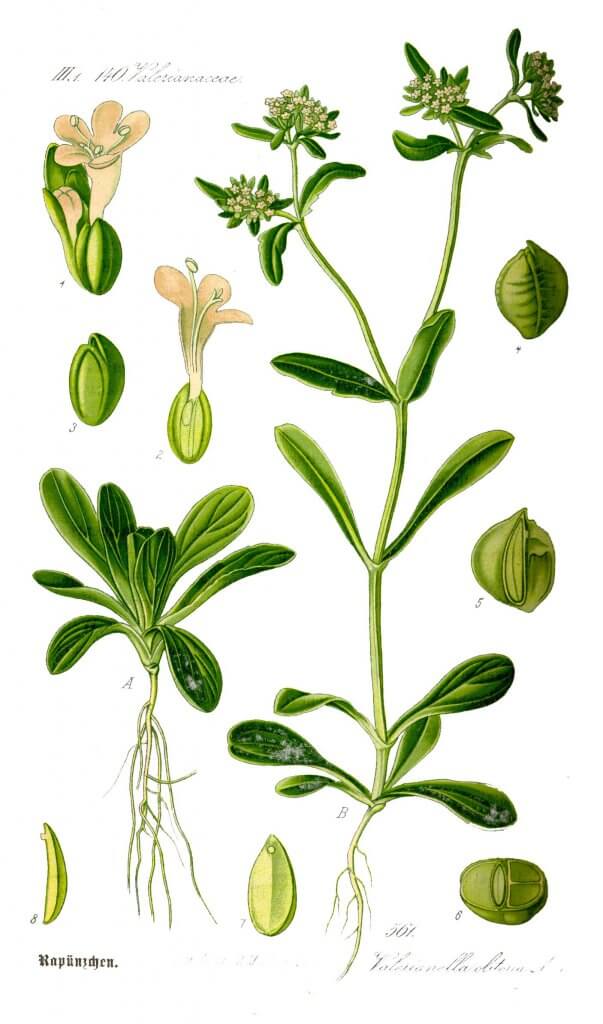
(Photo by:
Otto Wilhelm Thomé /Wikimedia Commons)
The inconspicuous corn salad plant (Valerianella locusta) was once considered a weed. It’s native to Europe, northern Africa, and western Asia where they can be found growing freely in grain fields. In fact, the name corn salad came from the fact that this plant usually grows as a weed in corn fields. But in the 17th century, a French royal gardener started cultivating it and introduced it to the world. It’s especially wonderful to use in salads because of its nutty flavor and soft texture.
Edibility and culinary use
This plant’s dark green leaves are edible and can be eaten raw or cooked. They’re typically mixed with other greens in a salad. These leaves have a mildly sweet and nutty flavor, giving it the nickname “mayonnaise of salad greens”. For a delicious salad, pair with a light vinaigrette, oil, or lemon juice as dressings. Corn salad also pairs well with boiled eggs, carrots, tomatoes, beets, fish, and almost all cheeses.
Alternatively, you can also cook this vegetable as you would with spinach. They can be sauteed or added into soups and stews. Just like with spinach, be careful not to overcook corn salad to preserve its mild flavor.
Health benefits
This plant is one of the most nutritious leafy greens out there. Corn salad is very rich in beta-carotene which plays a big role in maintaining immunity, eyesight, and good skin health. It’s a wonderful source of vitamin C which helps the body maintain and repair cells, prevent cardiovascular diseases, and improve the immune system. Vitamin B9 is also found in corn salad. It’s particularly important for growing children and pregnant women because it promotes cellular renewal.
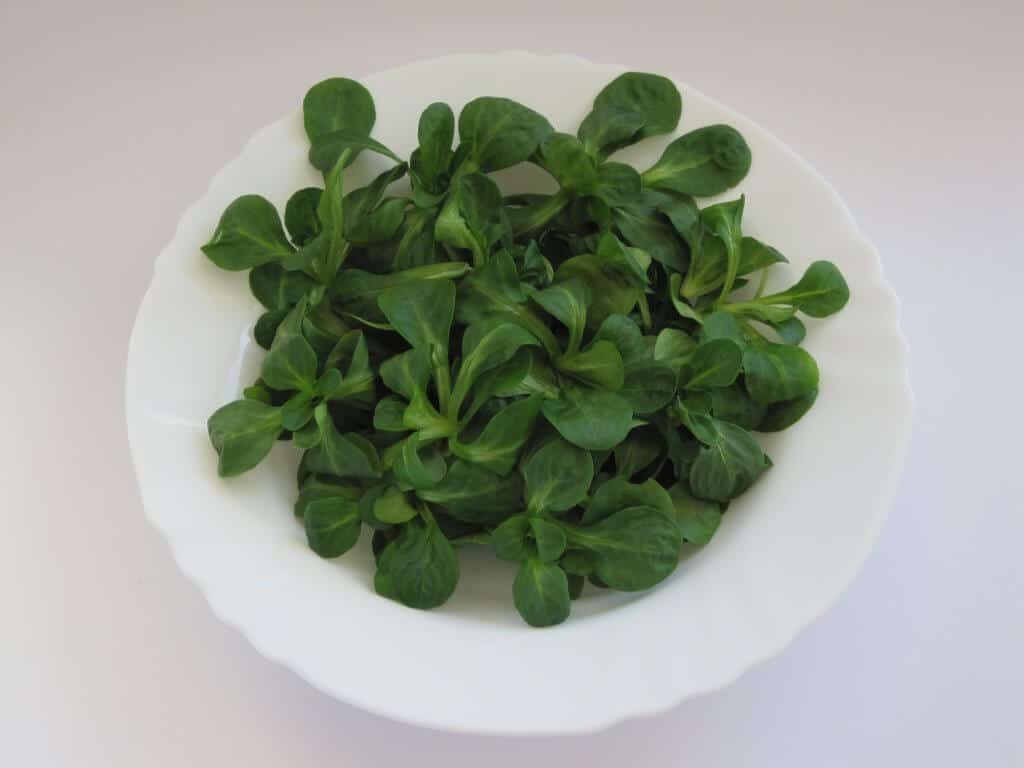
(Photo by: Schwäbin/Wikimedia Commons)
It’s also a good source of minerals, such as iron, potassium, calcium, magnesium, and phosphorus. Corn salad is full of fiber which promotes a healthy digestive system. This leafy green also contains lots of phytonutrients and antioxidants which can protect you from cardiovascular diseases and cancer.
Cultivation
Corn salad is an annual plant that grows well in cooler temperature. In fact, it’s considered a winter vegetable because the harvest period usually lies in early fall and the entirety of winter. Growing this plant in your garden will provide you with delicious leafy greens all year round, including when there aren’t many other greens available. Moreover, corn salad is easy to grow and requires low maintenance, great for beginner gardeners.
Corn salad grows best under full sun, but it can tolerate partial shade. This plant isn’t fussy and can grow in almost any type of soil. But, it will thrive better on nitrogen-rich soil. Before planting, make sure to prepare the soil by adding lots of manure or compost. After the plant has settled, fertilize every 2 or 3 weeks for thick and healthy foliage.
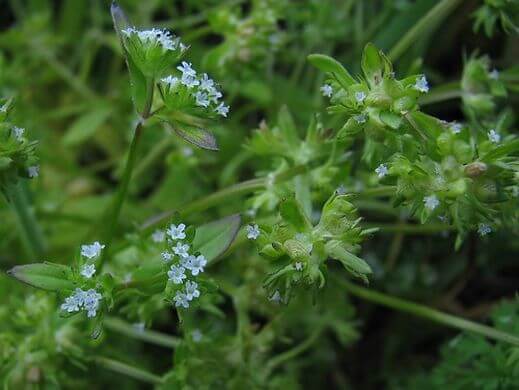
(Photo by: Tico/Flickr)
You can start sowing the seeds in early spring and again in September for fall and winter harvest. Sow seeds directly onto the ground, approximately ¼” to ½” deep and about 1’ apart from each other. They should germinate within one or two weeks. This plant grows quickly and can be harvested within 30 to 60 days after sowing.
Make sure to harvest only the young leaves. Older leaves tend to lose their nutty flavor and has lower nutritional contents. To harvest gather a bunch of leaves together and cut with a sharp knife about 1” to 2” from the soil. This will encourage the plant to grow back.
Cautions
There are no known adverse side effects from eating this plant. It’s generally safe to consume.
Conclusion
Corn salad is a wonderful plant to have. This plant is very hardy and can withstand cold temperatures, allowing them to thrive and provide you with leafy greens all year long. Moreover, with its delicate nutty flavor, it certainly has the taste that will please everyone.
---------------
Writen by Cornelia Tjandra
Cornelia is a freelance writer with a passion for bringing words to life and sharing useful information with the world. Her educational background in natural science and social issues has given her a broad base to approach various topics with ease. Learn more about her writing services on Upwork.com or contact her directly by email at cornelia.tjandra@gmail.com
Many of our readers find that subscribing to Eat The Planet is the best way to make sure they don't miss any of our valuable information about wild edibles.
See our privacy policy for more information about ads on this site

